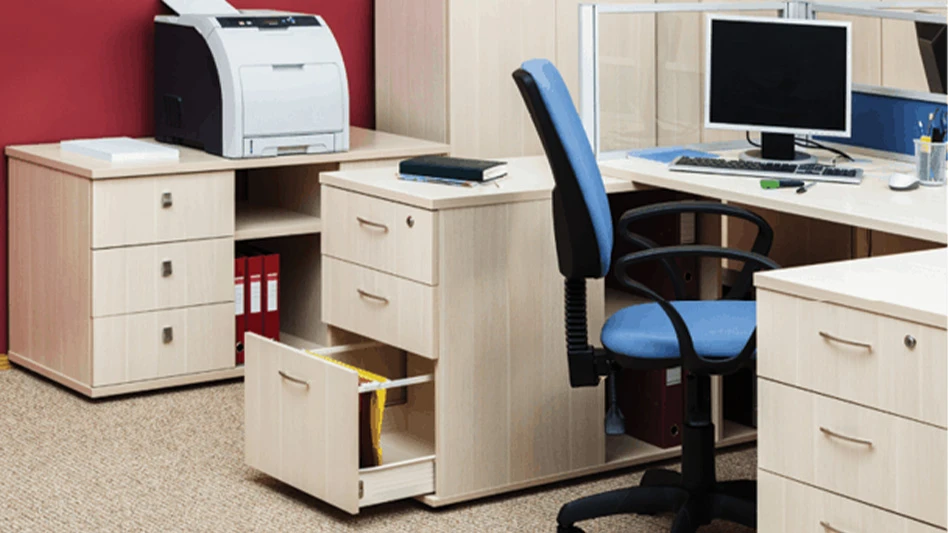

Editor’s Note: This article was reprinted with permission from Pinto & Associates.
When bed bug complaints come from an office account, we tend to think of these as bed bug “introductions” rather than “infestations.” There are reasons for that. Typically, stray bed bugs are carried into offices on purses, briefcases, backpacks, clothes, deliveries, etc., by employees, visitors or contractors. Only in unusual situations can bed bugs reproduce in offices. Blood meals that are required to produce eggs are difficult to come by because sleeping hosts are not present at night.
Bed bugs in offices may go undetected for some time, but once discovered, word travels fast. The idea that bed bugs are present in the workplace can initiate a small panic and a demand for a professional inspection. Here’s where you enter the picture. How can you ever locate bed bugs in an office environment, given all of the desks, cubicles, files and equipment? The good news is that you are usually looking for no more than a few bed bugs. The bad news is that you are looking for no more than a few bed bugs…but in a nontraditional site where different inspection rules apply.
Bed bugs behave differently in offices. They wander more and spread into less predictable locations. Populations grow slowly, generally not through reproduction but through repeated introductions, often from the same individuals. In offices, bed bugs are active at night at first, but since they typically cannot find hosts to feed upon, they may shift their activity to daylight hours. Since bed bugs are out of their normal environment, it’s hard to predict where they will end up in an office as they search for hosts. You may get lucky and find the bugs still concentrated around the desk of the person who carried them in from home.
Which Detection Method?
There are basically three types of detection methods to consider: canine teams, visual inspections and bed bug monitors. Each has its pros and cons and, unfortunately, none of the methods will work well when bed bugs are present in very low numbers. Rutgers University researchers compared the accuracy of each of these methods in apartments,* which doesn’t translate directly to office spaces, but gives you an idea of what works outside of a lab.
1. Canine scent detection team. “Team” refers to a dog and a handler, because any alert by the dog must be verified by a human handler by placing monitors to be checked later. This method is the fastest and most efficient for a large area like a waiting room or an office full of cubicles. If you are getting ongoing sightings of bugs in different locations, but are not getting alerts from the dog, consider bringing in another dog. The Rutgers’ field test of “real world” canine teams found an average detection rate of 44 percent and a false positive rate that averaged 15-19 percent. This is why you should follow up on dog alerts with a visual inspection.
2. Visual inspections. This means you physically and visually check sites where bed bugs could potentially be found. When you need to check a small area, such as someone’s office or a desk where a bed bug was seen, this method is more cost-effective than use of a canine team. In the suspect area, check cubicle dividers, upholstered chairs, under raised floors, beneath moldings and in folders, files and office equipment. The Rutgers tests found that visual inspections were about 50 percent accurate in finding bed bugs in low-level infestations in apartments. Follow a visual inspection by placing a few active monitors (see below) in the immediate area.
3. Monitors. There are many different styles of bed bug monitors, both passive and active. Passive monitors include moat and pitfall traps but not standard sticky traps, which do not work well against bed bugs. Active monitors are those that use a lure such as CO2, a chemical attractant or heat, and are usually a better choice for offices. An advantage to monitors is that the monitor not only detects the bed bugs but traps and holds them as well, a real plus when dealing with only small numbers of bugs.
The Rutgers research found that when few bed bugs were present in apartments, the greatest number of bugs was detected by passive pitfall-style monitors (70 percent) placed under the legs of beds and upholstered furniture for seven days, compared with visual inspections (50 percent) or active monitors (10 to 60 percent) placed next to beds and furniture for one day.
The biggest challenge in using monitors is figuring out where to place them in an office setting that doesn’t have beds. Check monitors each week. If a monitor catches a bed bug, expand the monitoring area to adjacent cubicles.
*Source: R. Cooper, C. Wang and N. Singh. Accuracy of trained canines for detecting bed bugs (Hemiptera: Cimicidae). Journal of Economic Entomology 106(6):2171-2181.2014

Explore the June 2021 Issue
Check out more from this issue and find your next story to read.